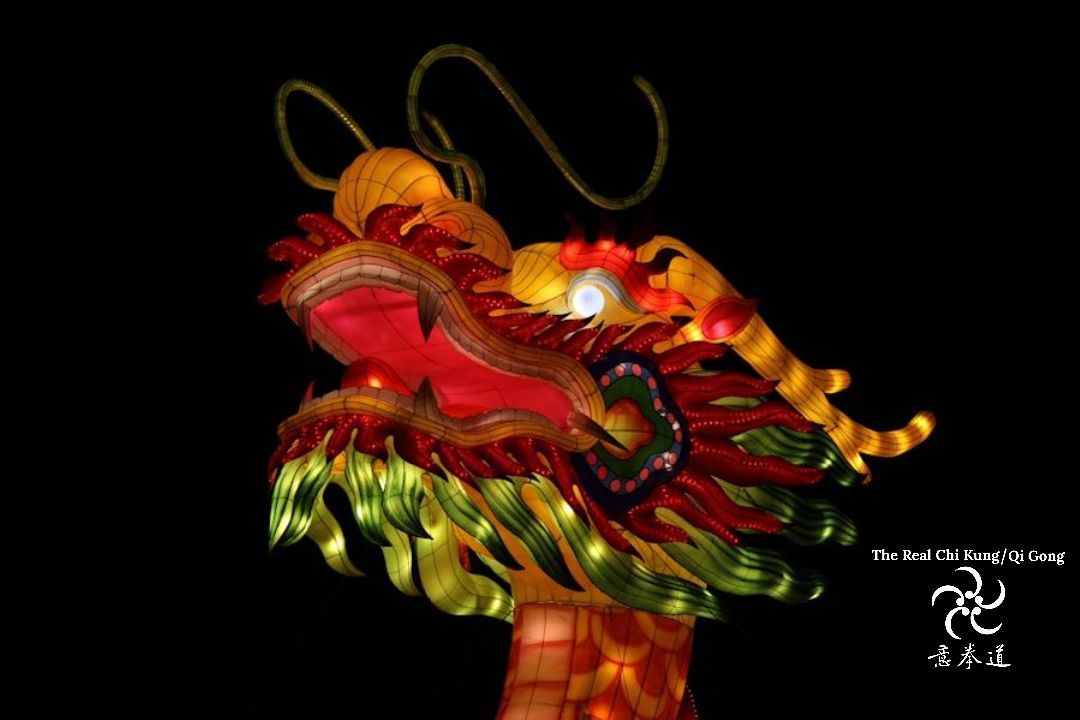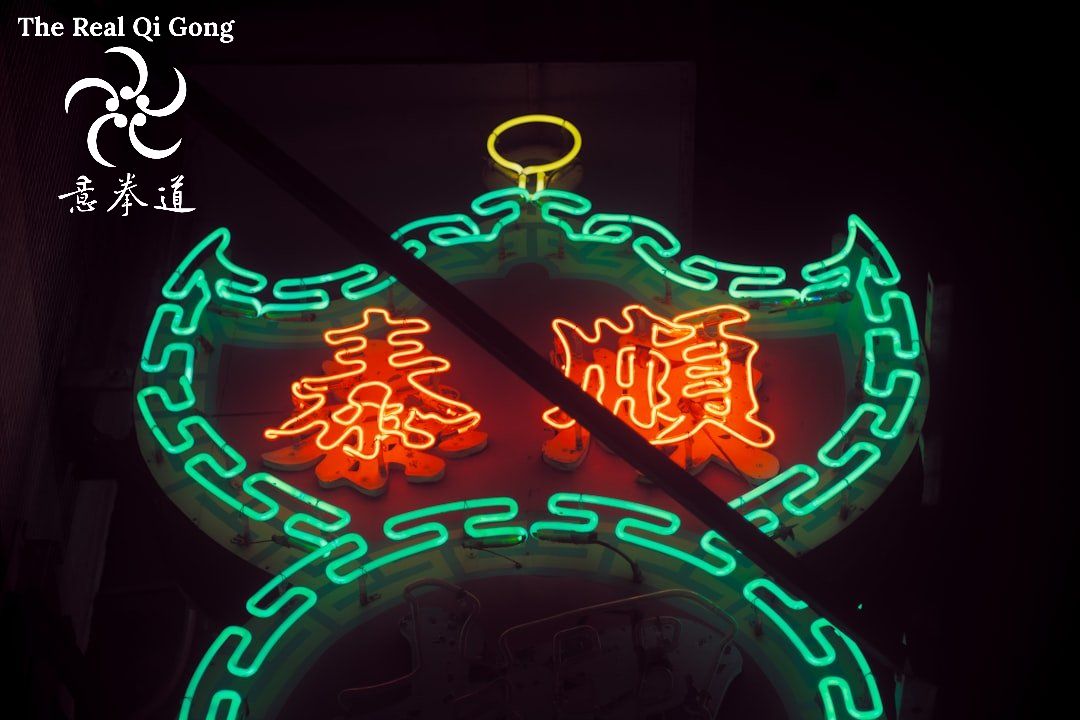The Healing Power of Qi Gong Chi Kung

Discover how Qi Gong (Chi Kung) boosts energy, heals naturally, reduces stress, and supports glowing skin and overall wellness.
The Healing Power of Qi Gong Chi Kung
Qi Gong, often referred to as Chi Kung, is a holistic practice that integrates physical postures, breathing techniques, and focused intention to cultivate and balance the vital life force known as "Qi" or "Chi." This ancient Chinese discipline is taught by Master Tommy now 84 sharing a lifetime of experience and wisdom that changes lives. This medical, static, and specialized form of Chi Kung is a comprehensive system that encompasses gentle movement, active meditation, and self-cultivation. The term "Qi Gong" translates to "energy work" or "skill in cultivating energy," reflecting its core purpose of enhancing the flow of energy within the body. Practitioners will learn step by step and over the course of 12 lessons to build the necessary chi to open their micro cosmic orbit.
At its essence, Qi Gong is about fostering a deep connection with one's internal energy. The practice encourages individuals to become more attuned to their bodies and the subtle energies that flow through them. By focusing on specific breath control and internal mindful movement, practitioners can enhance their awareness of Qi, training their nervous system and for improved organ health and overall well-being.
The rhythmic nature of life is felt within Sifu Tommy’s Qi Gong practice and promotes relaxation in order to reduce stress, making it an accessible practice for individuals of all ages and fitness levels. Performed alone, Qi Gong serves as a pathway to greater self-awareness and vitality. Learn more about the benefits of Chi Kung practice at The Real Tai Chi School.
Sifu Tommy Chi Kung Key Takeaways
Qi Gong Chi Kung, a traditional Chinese practice, involves three types of body posture, subtle internal movement, and specialized breathing to promote the flow of "qi" or life energy in the course.
Practicing Qi Gong Chi Kung leads to improved physical strength by improving the nervous system which recruits muscle use, balance, and overall well-being.
Qi Gong Chi Kung has a long history dating back to ancient China, with roots in Taoism, Buddhism, and Confucianism.
Qi Gong Chi Kung promotes physical self healing by enhancing the body's immune system over time, providing natural ability to heal itself and improving circulation and energy flow.
Qi Gong Chi Kung promotes mental and emotional healing by reducing stress, anxiety, and depression, and promoting a sense of calm and inner peace. This translates to healthier skin, eyes, and glow.
Benefits of Practicing Sifu Tommy’s Qi Gong Chi Kung
The benefits of practicing Sifu Tommy’s Qi Gong are extensive and multifaceted, impacting physical health, mental clarity, and emotional stability. One of the most notable advantages is its ability to reduce stress and anxiety. The meditative aspects of Qi Gong encourage practitioners to enter a state of parasympathetic relaxation, which lowers cortisol levels over time and promotes a sense of calm.
This reduction in stress not only enhances mental well-being but also contributes to improved physical health by lowering blood pressure and reducing the risk of stress-related illnesses. Moreover, Qi Gong is known for its positive effects on physical health. Regular practice can enhance relaxation, strength, and balance, making it particularly beneficial for older adults or those recovering from injuries.
The gentle movements help to improve circulation and boost the immune system, promoting overall vitality. Additionally, many practitioners report experiencing increased energy levels and improved sleep quality as a result of their Qi Gong practice. This holistic approach to health emphasizes the interconnectedness of body and mind, leading to a more balanced and harmonious life.
The History and Origins of Qi Gong Chi Kung

The roots of Qi Gong can be traced back thousands of years to ancient China, where it emerged as part of the broader framework of Traditional Chinese Medicine (TCM). Historical texts suggest that Qi Gong practices were developed as early as the Zhou Dynasty (1046-256 BCE), with references found in ancient philosophical works such as the Dao De Jing by Laozi. These early practices were often intertwined with martial arts, meditation, and spiritual cultivation, reflecting the holistic nature of Chinese philosophy.
Throughout history, Qi Gong has evolved into various forms, each with its unique focus and methodology. During the Tang Dynasty (618-907 CE), Qi Gong began to gain prominence among scholars and monks who sought to enhance their physical health and spiritual development. By the Ming Dynasty (1368-1644 CE), Qi Gong had become more widely practiced among the general population, leading to the establishment of numerous schools and styles.
Today, there are hundreds of different forms of Qi Gong, each emphasizing different aspects such as healing, martial arts, or spiritual growth. We know Sifu Tommy’s Chi Kung to be unique in supporting the slow, safe building of the chi in the order designed to be felt, understood, internal, and designed as the internal martial art.
How Qi Gong Chi Kung Promotes Physical Healing
Physical Healing Benefits of Qi Gong Chi Kung Explanation
Improved circulation - Qi Gong promotes blood flow and oxygen delivery to the body's tissues, aiding in healing and recovery.
Reduced inflammation - Practicing Qi Gong can help reduce inflammation in the body, which is beneficial for healing various conditions.
Enhanced flexibility and mobility- Regular practice of Qi Gong can improve flexibility and mobility, aiding in the recovery from injuries and promoting overall physical well-being.
Strengthened immune system - Qi Gong practice has been shown to boost the immune system, helping the body to fight off illness and promote healing.
Stress reduction - Reducing stress through Qi Gong practice can have a positive impact on physical healing, as stress can hinder the body's ability to heal.
Qi gong plays a significant role in promoting physical healing through its emphasis on energy flow and balance within the body. The practice encourages the smooth circulation of Qi, which is believed to be essential for maintaining health. When Qi is blocked or stagnant due to stress, poor posture, or illness, it can lead to various health issues.
Through using the mind to generate internal movements and breath control, Qi Gong helps to release these blockages, allowing for a more harmonious flow of energy. Research has shown that Qi Gong can be effective in managing chronic pain conditions such as arthritis and fibromyalgia. A study published in the Journal of Pain Research found that participants who practiced Qi Gong experienced significant reductions in pain levels and improvements in overall quality of life.
Additionally, Qi Gong has been associated with enhanced recovery from surgery and injury by promoting faster healing through improved circulation and immune function. The practice's focus on relaxation also aids in reducing muscle tension and promoting faster recovery from physical exertion.
How Qi Gong Chi Kung Promotes Mental and Emotional Healing
Beyond its physical benefits, Qi Gong is equally powerful in fostering mental and emotional healing. The meditative aspects of the practice encourage mindfulness and present-moment awareness, which can significantly reduce symptoms of anxiety and depression. By focusing on breath and movement, practitioners learn to quiet their minds and cultivate a sense of inner peace.
This mental clarity allows individuals to process emotions more effectively and develop healthier coping mechanisms. Furthermore, Qi Gong promotes emotional resilience by encouraging self-reflection and self-acceptance. As practitioners engage in the movements and meditative practices, they often find themselves confronting their thoughts and feelings in a non-judgmental way.
This process can lead to greater emotional awareness and a deeper understanding of oneself. Many individuals report feeling more balanced emotionally after incorporating Qi Gong into their routines, experiencing less reactivity to stressors and an increased ability to navigate life's challenges with grace.
The Role of Qi Gong Chi Kung in Traditional Chinese Medicine

In Traditional Chinese Medicine (TCM), Qi Gong is considered an essential component of holistic health care. TCM operates on the principle that health is achieved through balance—specifically, the balance between Yin (the passive force) and Yang (the active force) within the body. Qi Gong serves as a practical tool for achieving this balance by promoting the free flow of Qi throughout the meridians or energy pathways in the body.
Practitioners of TCM, such as student Matthew Ancira, recommend Qi Gong as a complementary therapy for various ailments. For instance, individuals suffering from respiratory issues may benefit from specific breathing techniques within Qi Gong that enhance lung capacity and function. Similarly, those dealing with digestive disorders can find relief through movements that stimulate digestive organs.
By integrating Qi Gong into TCM practices such as bodywork, acupuncture or herbal medicine, practitioners can create a comprehensive treatment plan that addresses both symptoms and underlying imbalances.
How to Get Started with Qi Gong Chi Kung Practice
Sign up today to take Sifu Tommy’s Level One Qi Gong practice for a life changing experience. For beginners, it is essential to start with a guided education. The ideal resource available for those interested in learning Qi Gong is being led by a Master.
Joining an online course provides valuable detailed guidance on technique while also fostering a sense of community among practitioners from around the world. When starting out, it is advisable to set aside dedicated time for practice each day or week. Even short sessions can be beneficial; consistency is key in cultivating the benefits of Qi Gong.
Beginners should focus on understanding slowly and building awareness before gradually progressing to become comfortable with the overall practice. Listening to one's body is crucial; practitioners should honor their limits while remaining open to exploring. Sifu Tommy offers knowledge of how to practice effectively standing, sitting, and laying down.
Sifu Offers Tips for Incorporating Qi Gong Chi Kung into Your Daily Routine
Integrating Qi Gong daily enhances overall well-being while providing moments of mindfulness amidst busy schedules and challenging times. One effective approach is to establish a morning routine that includes a session of Qi Gong practice. This can set a positive tone for the day ahead by promoting relaxation and mental clarity before engaging in daily responsibilities.
Additionally, practitioners can incorporate the specific breathing of Qi Gong throughout their day—such as during breaks at work or while waiting in line—by practicing breathing exercise. These mini-sessions can serve as effective stress relievers and help maintain focus during hectic moments. Creating a dedicated space for practice at home can also enhance commitment; this space should be quiet, comfortable, and free from distractions when possible.
Ultimately, the key to successfully incorporating Qi Gong into daily life lies in finding the right guide, material, and organized approach, Sifu Tommy’s Chi Kung course is just that! The structured classes embrace the principles of Qi Gong leading to profound transformations in both physical health and emotional well-being.
FAQs
What is Qi Gong (Chi Kung)?
Qi Gong, also known as Chi Kung, is a traditional Chinese practice that involves coordinated body posture, internal movement, specialized breathing, and an active meditation. It builds the flow of qi (life energy) in the body, leading to improved health and vitality.
What are the benefits of practicing Sifu Tommy’s Qi Gong?
Practicing Qi Gong has a wide range of health benefits, including improved visual appearance, mental balance, strength, and overall physical and mental well-being. It can reduce stress, promote relaxation, and enhance the body's natural healing abilities.
Is Qi Gong a form of exercise?
Yes, Qi Gong can be considered a form of exercise. In Sifu Tommy’s Chi Kung course the art is internal and the chi is felt. The body moves from the inside as the reservoir of chi is built. However, it is also a mind-body practice that incorporates meditation and mindfulness.
Is Qi Gong suitable for people of all ages and fitness levels?
Yes, Qi Gong is suitable for people of all ages and fitness levels. The gentle nature of the practice makes it accessible to most individuals, including those who may have physical limitations or health concerns. To address these the course teaches various positions to accommodate even those who are bed ridden or in a wheelchair.
Are there different styles or forms of Qi Gong?
Yes, there are many different styles and forms of Qi Gong, however not all practices are made equal. Some popular styles include Tai Chi Qi Gong, Medical Qi Gong, and Five Animal Qi Gong. Sifu Tommy teaches an ancient and proven system of Chi Kung that is for health and beauty and internal for martial purposes as well.
Is Qi Gong considered a spiritual practice?
Anything that helps a person to understand their inner workings and grow as a human can be considered a spiritual practice. Qi Gong has roots in traditional Chinese medicine and philosophy, and depending on your personal beliefs and intentions while listening to Sifu in his teachings and shared stories one may find the course filled with deep and spiritual insights that will ground you in the understanding of life and chi.
Categories: : Chi Kung
 Higher Learning School®
Higher Learning School® 